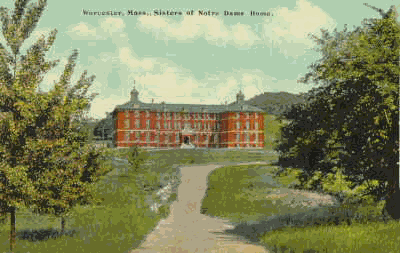 | |
Last
revised: |
Gérard Brault reports in his book The French Canadian Heritage in New England, [1986, p. 193] that there were still 198 parochial schools servicing 104,644 children Franco-American pupils in 1938. Most of these schools were « bilingual schools ». All taught French as a subject and used French as a language of instruction to a varying degree. To the extent that this reinforced the learning of the language within the family and the Church, it made a real contribution to « la survivance ». Parochial school attendance varied from state to state, being the highest in Maine where children in French schools represented 13% of the population of Franco-Americans in the state, and lowest in Vermont where the proportion was 6.3%. As was the case in Quebec, most of the teachers in such schools were nuns and brothers. The school shown below is that of the Congrégation Notre-Dame in Worcester. The C.N.D.’s were of Quebec origin where they also operated a large network of schools in keeping with the philosophy of their founder Marguerite Bourgeoys. The crowning establishment of the Franco-American school system was Assumption College founded in 1904 in Worcester. It provided secondary and college education on the pattern of Quebec’s classical colleges with a four-year high school level and a four year college section. Emphasis was placed on Arts and letters, languages and philosophy. Back to : The Emigration of French Canadians to the United States, 1840-1930 © 1999 Claude Bélanger, Marianopolis College |
